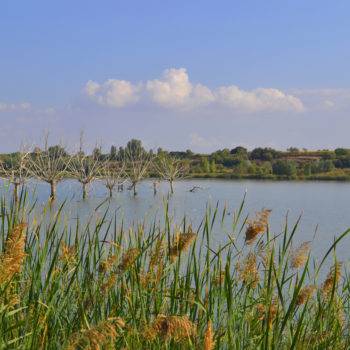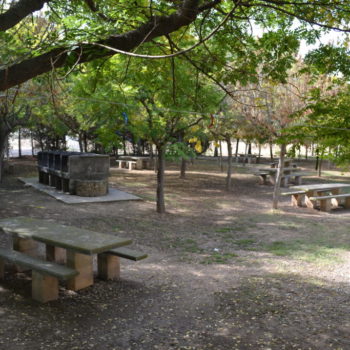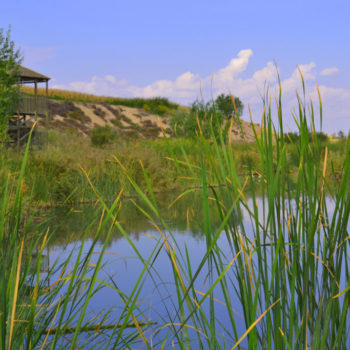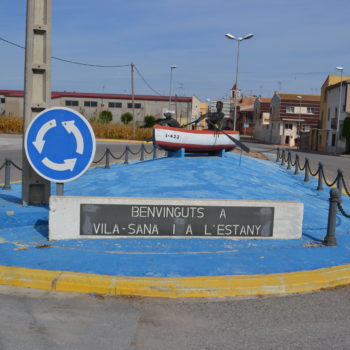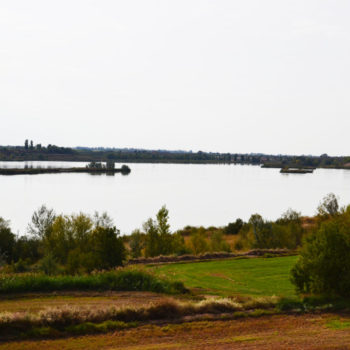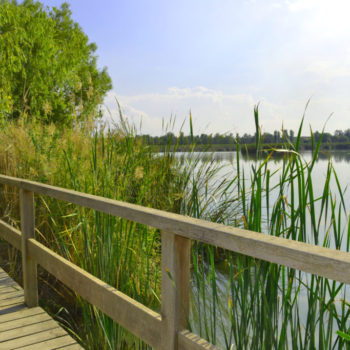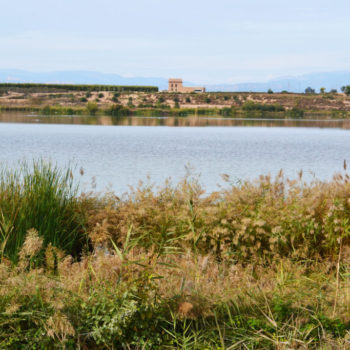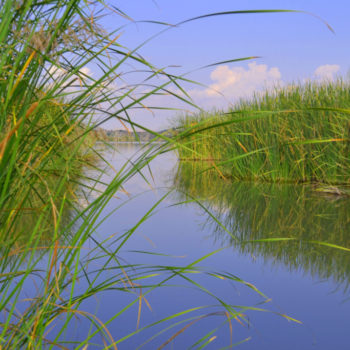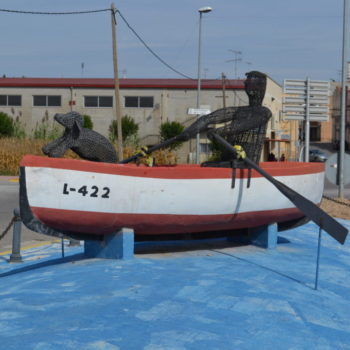- Terrain: Mountain bike – BTT, Climbing, Golf, Horse riding, Gastronomic routes, Tennis, Wine tourism.
- Air: Hang Gliding, Skydiving, Paragliding, Ultralight.
- Workshops: Photography, Observation of fauna and flora.
PLACES TO VISIT
ESTANY D’IVARS I VILA-SANA
(POND OF IVARS AND VILA-SANA)
The lake of Ivars i Vila-sana is a lake located between the municipalities of Ivars d’Urgell and Vila-sana, in the region of Pla d’Urgell. It was recovered from 2005 and has a water surface of 126 ha.
It is the largest inland lake in Catalonia in terms of dimensions and is home to an important biological diversity.
Also called Ivars lake or Utxafava lagoon, the formation of this lake goes back thousands of years. It is currently a freshwater lagoon, although its origin is Endorreic. The incoming water comes from the Urgell canal and corresponds to the same amount that was used to irrigate the existing farms before the recovery. The drain from the pond drains towards a tributary of the Corb river.
Along the lake, islands were recreated with different shapes, slopes, heights and locations that favor fauna, especially birds, with resting, feeding and reproduction points. In a few years, after recovery, more than 225 species have been observed.
The official website is www.estanyivarsvilasana.cat and the tourist information point in l’Estany is Cal Sinen, a renovated farmhouse located on the lake itself. There is a visitor service desk and a local food store and its regular opening hours are every Saturday and Sunday morning.
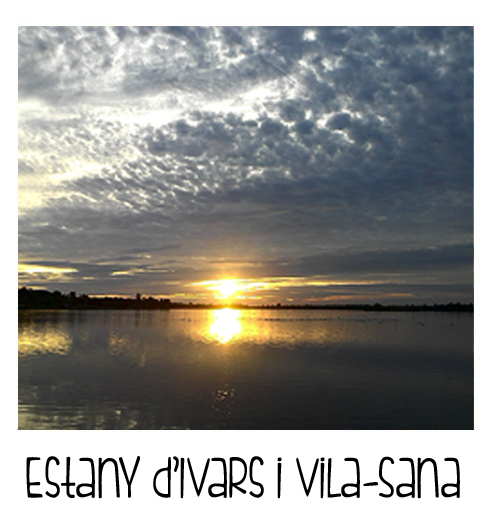
MUSEU VESTITS DE PAPER
(PAPER COSTUMES’S MUSEUM)
In December 2009, the new Paper Dress Museum opened its doors coinciding with the same weekend as the 44th National Paper Dress Contest and the 46th Mollerussa City Contest.
Among the singularities of Mollerussa, the best known may be the Paper Dress Contest that has been held there for 50 years.
The Museum is located next to the Amistat theater, the place where the contest has traditionally been held and also the place where the first costume exhibition began. Back then you couldn’t really talk about a museum, but the space between the theater boxes was used to display the winning costumes.
The number of dresses keeps growing since every year the museum keeps all the prize-winning dresses from the competition and the donations from the dressmakers who prefer the museum to take over their creations.
Currently there are more than eighty dresses on display and where, in addition, an attempt has been made to explain the history of the contest, its beginnings, a museum that aims to explain how a paper dress is made or take us to 50s of the 20th century when, in a small workshop in the city of Mollerussa, the idea arose to exchange clothes for paper.
You can consult more information on its official website www.museuvestitspaper.cat.
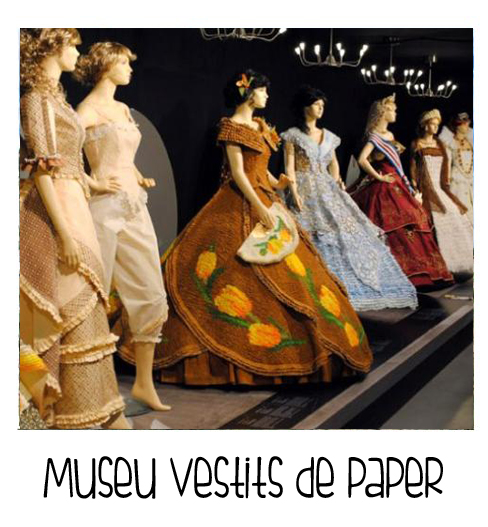
MUSEU DE L’AIGUA / CASA CANAL
(WATER’S MUSEUM)
The Canals d’Urgell Cultural Space (ECCU) is an interpretation center for the lands irrigated by the Canals d’Urgell. This space is based in the basement of the General Comunitat de Regants dels Canals d’Urgell house. This house, also called Casa Canal, is a 1,200 m2 building, built between 1867 and 1876.
The General Irrigation Community of the Canals d’Urgell, the Mollerussa Town Council, the Regional Council of the Plan d’Urgell and the Department of Agriculture, Livestock, Fisheries, Food and the Natural Environment of the Generalitat de Catalunya constitute, in 2002 , the Water Museum Consortium of the Canals d’Urgell.? A legal entity of its own whose purpose is to preserve and disseminate all the heritage that has generated, generates and will generate the Canals d’Urgell, understood as a decisive factor in the transformations caused in the entire territory that it irrigates.
As a result of this Consortium, the Canals d’Urgell Cultural Space was born, inaugurated on March 8, 2003. This space aims to reflect each and every one of the natural, economic, cultural and social transformations that have taken place in all of Ponent’s lands irrigated by the Canals. More specifically, we are talking about the counties of Urgell, Pla d’Urgell, Noguera, Garrigues and Segrià. Five counties that currently make up one of the largest artificially irrigated areas in all of Europe.
The Cultural Space has two different presentation areas when visiting:
Permanent space Exhibition fixed in time and dealing with the territory and the channel.
Temporary spaces. Multipurpose hall and small exhibition hall where the exhibitions are temporary and foreign.
In the garden outside the house they find restored pieces that also tell us about the transformation of the territory, such as the lute, the wagon, the winnowing machine, the sine barge, the grain threshing machine, the threshing machine, etc. In the same avenue where the building is located, we find the passage of the third main canal of the Canal d’Urgell and the corresponding waterfall.
More information at:
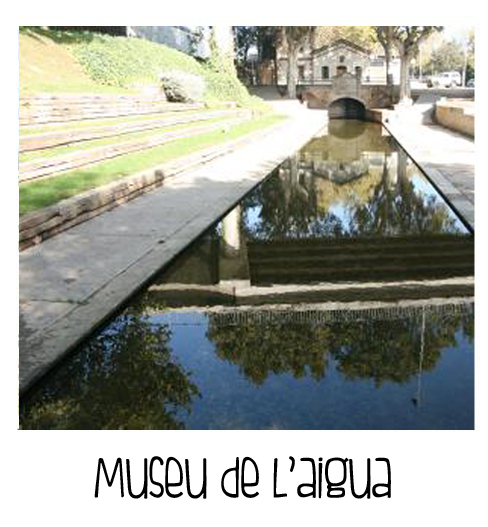
PARC DE LES OLORS
(ODOR PARK)
The Parc de les Olors de Linyola is located on the grounds of an old tile factory in the town, the Bòbila del Xifré and the fields that surround it. The Park has about 6,000 m2 of landscaped area and has views towards the south that allow you to contemplate the characteristic landscape of the Pla d’Urgell: a practically continuous plain, with very gentle reliefs and rectilinear horizons, and with one of the most spectacular sunsets in Catalonia.
The garden area is structured in different parterres, with a central pergola and two avenues also with pergolas that provide shade and that break up the practically flat field where more than 90 species of aromatic and medicinal plants have been planted and more than 40 species of trees and shrubs. The plants are grouped according to their applications, both culinary, medicinal and aromatic, and especially in relation to the different crafts, which used these plants to make objects such as baskets, dyes for clothes, tools for the field and various works.
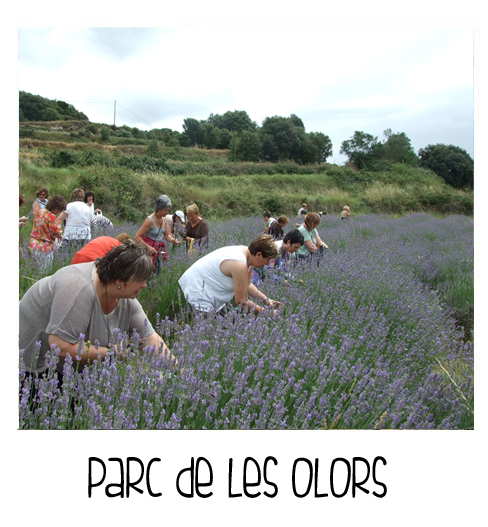
LABERINT BLAT DE MORO
(CORN MAZE)
The corn maze is a recreational space where you will find a series of paths, some with no exit, some that take you backwards,… drawn between rows of corn that do not let us see beyond.
The labyrinth is located inside Masia Esperança, an agricultural estate in the village of Castellserà (Urgell – Lleida). It has an extension of 3 hectares where you will find more than 2 kilometers of corridors.
To go through the labyrinth, on weekends, you need to be dressed and wearing comfortable clothes and go with a good mood and a desire to have a good time, since it is a shocking activity due to the feeling it causes of being completely disoriented, without seeing anything more than corn in the immediate vicinity (we think that corn reaches two and a half meters in height). It can be visited in the mornings or, by prior reservation, at night, in which case you will need to be prepared with flashlights.
Unlike other mazes, the corn maze has an expiration date. It will remain until it is time to harvest the corn, in mid-late September or early October, depending on the weather.
To visit the corn maze, we recommend always checking schedules and availability on the phones: 973 40 20 45 / 973 61 03 87

SANT LLORENÇ DE MONTGAI
Sant Llorenç de Montgai, just 30 minutes by car, is known for its reservoir, an ideal place to enjoy numerous water and leisure activities, such as kayaking through the calm and majestic waters of the lake or practicing sport fishing In addition, the space has been declared a natural wildlife reserve.
The town, located at the foot of the reservoir, belongs to the term of Camarasa. On top of a hill, to the west of the town, we find the ruins of an old Saracen castle. The reservoir stretches along the road surrounded by fainting trees that leads us to the dam. The construction dates from 1935 and was the work of the Canadenca. The Romanesque church should be highlighted. In addition, Sant Llorenç de Montgai is a good spot for observing waterfowl.
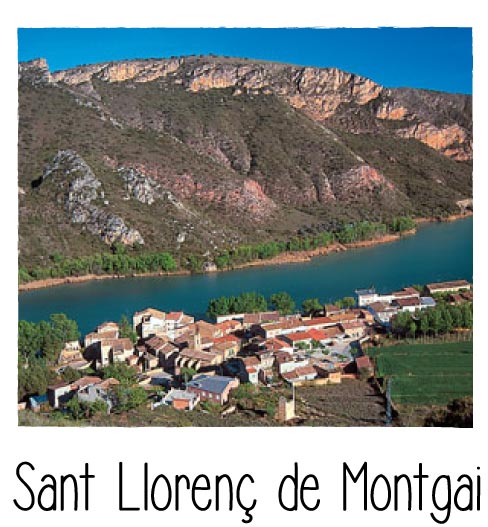
BALAGUER
Route through Balaguer:
Low difficulty – 90 minutes approximately. Balaguer is the capital of La Noguera, a city of accounts, and where we will find monuments that show the passage of time and the identity that the Segre River gives them. We will start the route from Plaça Mercadal, emblematic for its porches and the market that has been held every Saturday for more than 800 years. It is located in the old part of the city and between important buildings such as Carrer de la Botera, where we can admire the Portal de Gel and access the remains of the Wall of Balaguer, which protected the inhabitants from possible assailants. Continuing along the wall, we will reach the Church of Santa Maria, a majestic architectural work from where we can also observe magnificent views of Balaguer. We will finish visiting the old town by walking through such emblematic streets as Carrer del Barrinou, where we will find the Regional Museum of Balaguer, Carrer Major and Carrer d’Avall, known for their commercial activity. We will end the route through the old town at Plaça Sant Salvador, where we will be able to access Carrer del Pont where we will find the stairs up to Sant Crist de Balaguer. Once we have visited the Sanctuary, we will return to Pont Vell where we can enjoy the views of the old town of Balaguer over the flow of the Segre River and we will end the route in Balaguer with a walk through the garden area on the bank of the Segre River. If you have more time, don’t miss the Castle Formós de Balaguer (www.castellsdelleida.com) or the Monestir de les Franqueses (www.monestirs.cat). If you want more information, you can contact the Balaguer Tourism Office, located in Plaça Comptes d’Urgell no. 5, or phone 973 445 194.

Balaguer Museum:
Currently, the Museu de la Noguera administers and organizes the museum heritage of Balaguer and tries to coordinate the museum activity of the whole region and the development at the service of this task of research, documentation, conservation and restoration, dissemination and pedagogy of the integral heritage of the region.
The current headquarters has permanent exhibition rooms, a temporary exhibition room, shop, library, consultation room, laboratories and warehouses. You can consult more information at:
Live Pamies:
Interesting agro shop where knowledge exchange activities are scheduled for self-management of health and activist living. They collaborate in the guided tours of Dolça Revolución and promote organic agriculture:
The Lakes Train, Balaguer-La Pobla de Segur:
Enjoy a nostalgic journey that allows you to step back in time, an essential experience for lovers of the railway and pure nature. It is an unforgettable journey through the lands of Lleida to the lakes of the pre-Pyrenees: the train starts its route in Segrià, crosses La Noguera and Montsec and reaches the heart of the Pallars Jussà. The closest place to the apartments to start the route is the train station in the city of Balaguer, right where the landscape takes on the most beauty. The route takes us into the past with all the splendor and charm of the train itself with the two diesel locomotives 10817 and 10820, and pulling 4 period wagons, and offers us landscapes where nature, with its diversity of colors, it will make us fall in love and offer us feelings of freedom.
Consult the rates, timetables and reservations at www.trendelsllacs.cat or on the phone 933 664 553, or contact us for more information.
OR del Segre Interpretation Center:
In this space, through different panels and display cases, surrounded by a setting of a riparian or bultra forest, you can take a historical tour of the exploitation of gold in the Segre River, documented since Roman times in la Cerdanya, but which had moments of special activity in the Andalusian period and later in the 16th and 17th centuries, when mercury began to be used as an amalgam to extract gold from the sand.
The search for gold is carried out in the laundry room distributed in two spaces at different levels. The first is intended for children and is preceded by a large mural illustrated with legends and stories inspired by the search for and the value of gold, such as that of King Mides or the treasures of Count Pere d’Urgell. Here, boys and girls can practice panning for gold in adapted washrooms.
A collection of abacuses of different materials and periods from around the world gives way to the second space, intended for the general public, where the visitor can carry out a gold search workshop with the abacus and gold sand of the Segre .
Next to the washrooms, visitors can consult files on the history and technique of gold prospecting in the Segre and in different gold-bearing areas on other continents of the world.
More information at: www.museucn.com
ÀGER
Montsec Astronomical Park, Àger:
50 minutes far away, you can find the PAM (Montsec Astronomical Park) facilities located in the municipality of Àger. The PAM consists of two main elements: the Center for Observing the Universe (COU) and the Astronomical Observatory of Montsec (OAM) and is an initiative of the Government of Catalonia through the Consorci del Montsec, in order to take advantage of the skills and potential of the Montsec area for carrying out research, training and dissemination of science, especially Astronomy. The PAM takes advantage of unique characteristics that make Montsec the most suitable place in Catalonia for the installation of these centers. It is a new way of seeing everything that surrounds us, in addition to a leisurely and cultural visit, to learn while having fun. Find out about the timetables, rates and all the activities that take place on the website:
www.parcastronomic.cat or ask us to reserve the visit together with the accommodation reservation.
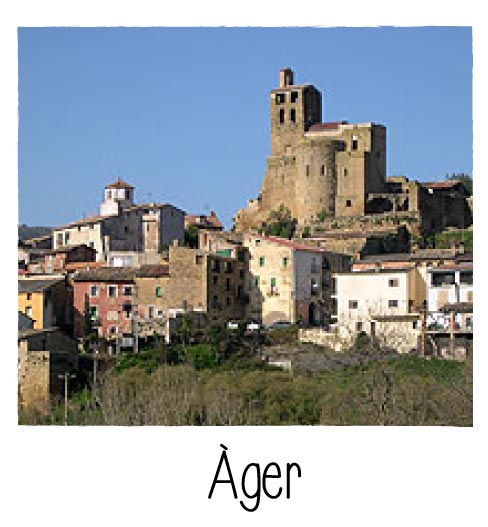
The Mont-rebei Gorge. The gorge by Kayak or boat-Bus.
This is the route par excellence of our regions. It is one of the most charming natural places in Lleida, not only because of the landscape it offers, virgin and far from the hand of man, but also because of the uniqueness of its itineraries deep in the rock. It is a very complete itinerary with a wonderful environment, an admirable natural spectacle located in a Protected Natural Area of more than 600 hectares and declared as a Wildlife Refuge, an ideal place for those who like ornithology. We can get there in two places:
1. Catalonia side: approx. 50 minutes. by car. The route starts from the village of Corçà where you can park your car. You could even reach the Hermitage of Pertusa, which is the first place we will be able to visit. It is a route of approximately 150 minutes (8 km.) and of moderate difficulty.
2. Aragon side: 90 minutes approx. by car. By the Carretera de la Vall d’Aran and up to the village of Puente de Montañana. On this side, it is of an easy level and much more recommended in hot periods such as July and August.
Once you arrive at the apartment, we will give you a map where we will explain the different options and paths.
You can also visit with Montsec Activa’s AQUA-BUS service: It makes 5 stops at different points in the Montrebei Gorge to be able to see the gorge in a different way or take the route on foot from any of the 5 jetties it offers. You can also combine it with the Kayaks rental service.
For more information, renting kayaks or places on the Aqua-bus boat: 629 386 955 – www.montsecactiva.com
La Àger Valley:
It is one of the places where nature shines and the opportunities to do activities present themselves to us in different ways. We can visit the Valley while doing aerial activities such as paragliding, ultralight, hot air balloon flight, etc. We can also take water routes by renting canoes or a motorboat, from the Mont-rebei gorge to Fet and Montfalcó. We must not forget the proposal to make excursions on horseback or on foot to places such as the Mont-rebei Gorge, the Pla de les Bruixes, the Via Romana, and other routes in the area.
To specify timetables or hire leisure activities, you can contact one of the following companies in the area:
LLEIDA
Lleida city:
In just 25 minutes by car, we will arrive in Lleida capital. The Palau de la Paeria is one of the most important Romanesque civil buildings in Catalonia. Currently, we find the City Hall there, located right in the middle of the commercial axis. We highlight the municipal archive, the Retaule room and La Morra (located in the basements, the name given to the chamber used for prisoners sentenced to death). The Seu Vella hill is one of the best vantage points in the city, where we can visit the emblematic Seu Vella Cathedral. Other distinctive features are the Choir, the Major Altarpiece and the exhibition of Tapestry dating from the 16th century. We can also visit Roman and medieval vestiges, churches, Andalusian baths or the remains of the feudal wall. We propose routes to discover and get to know the city in depth, from the most important monuments to the most everyday elements that show the living and cultural Lleida. Find all the information at: www.turismedelleida.com or by calling 902 250 050.
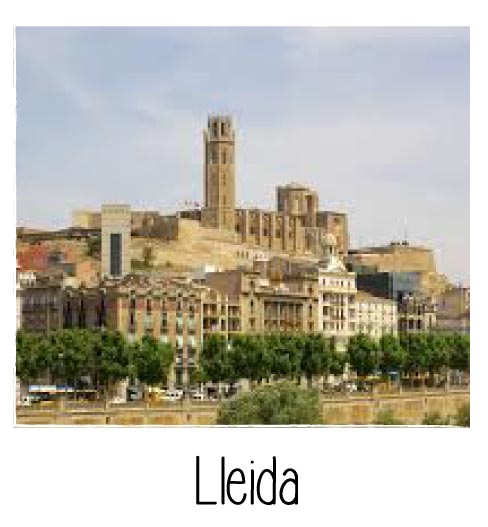
La Seu Cathedral:
The visit to the monumental complex of Turó de la Seu Vella allows you to enjoy magnificent views of the city from the Serpent’s Tongue Bastion or the Queen’s Bastion.
The Seu Vella can be accessed by car or on foot from Carrer Sant Martí, entering the walled compound through Porta del Lleó or from Plaça de Sant Joan, by elevator, through Portal de Sant Andreu.
La Seu Vella – also known as “the Castle of Lleida” – is the monument with which the city of Lleida is undoubtedly identified. This unique cathedral was built on a hill from where you can see not only the city, but also a large part of the Segrià region and the plain of Lleida.
For more information and visits see: www.turoseuvella.cat
SALÀS DE PALLARS
Salàs de Pallars and its shops Museum:
It is a walled town that stands out for its eras, the recovery of old shops, the art fair and above all for the livestock fair, which became one of the most important in all of Spain and which is currently it has been recovered as a livestock fair. It is located near the Sant Antoni reservoir and has the Piolet area, ideal for enjoying its transparent waters and practicing various nautical activities.
In the Shops Museu de Salàs de Pallars you can find many of the objects related to the old trade that our families have consumed over the last 100 years. The guided tour explains the origin of the barber shop, the pharmacy, the colonials, the tobacconist and the cafes while walking through Salàs de Pallars, a town with a commercial spirit as old as its famous round-footed cattle fair , which dates back to the Middle Ages.
More information and reservations at: www.lleidatur.com


